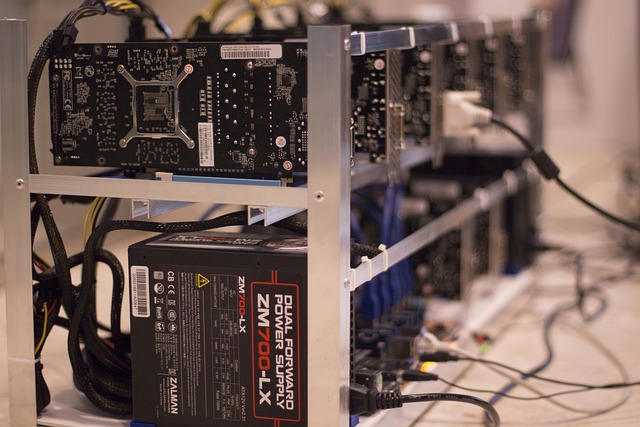“Discover the future of cryptocurrency access with Bitcoin ATMs—a game-changer in the crypto adoption landscape. This comprehensive guide unravels the installation process, delving into critical security aspects and practical steps for setting up these innovative machines. From understanding their role as entry points for crypto investment platforms to implementing robust security measures, we explore best practices for both setup and maintenance. Get ready to navigate the world of Bitcoin ATMs.”
- Understanding Bitcoin ATMs and Their Role in Crypto Adoption
- Security Considerations for Bitcoin ATM Installation
- The Step-by-Step Process of Setting Up a Bitcoin ATM
- Best Practices for Maintaining and Securing Your Bitcoin ATM
Understanding Bitcoin ATMs and Their Role in Crypto Adoption

Bitcoin ATMs, or Bitcoin Automated Teller Machines, are physical locations where users can buy and sell cryptocurrencies, including Bitcoin, using cash. They play a pivotal role in bridging the gap between traditional banking and the world of digital assets, making crypto more accessible to the general public. These machines operate similarly to regular ATMs but with a twist—they facilitate the conversion of fiat currency into cryptocurrencies and vice versa.
As the demand for crypto investment platforms grows, Bitcoin ATMs offer robust security measures that ensure safe transactions. They provide an additional layer of protection through encryption and secure networks, making them reliable endpoints in the crypto adoption journey. With their user-friendly interface, these ATMs enable both seasoned cryptocurrency enthusiasts and novice investors to participate in the market conveniently and securely.
Security Considerations for Bitcoin ATM Installation

When installing a Bitcoin ATM, security is of paramount importance due to the sensitive nature of cryptocurrency transactions. These machines serve as entry points for users to access and exchange their digital assets, making them potential targets for theft or fraud. As such, robust security measures are essential to protect both the machine itself and the customers interacting with it.
Crypto investment platforms with strong security protocols should be implemented to safeguard Bitcoin ATMs. This includes advanced encryption techniques, secure network connections, and tamper-proof hardware designs. Additionally, biometric authentication, surveillance systems, and regular security audits can deter potential criminals and ensure the integrity of transactions. By integrating these security considerations into the installation process, Bitcoin ATM operators can provide a safe and reliable environment for crypto enthusiasts to engage with decentralized finance.
The Step-by-Step Process of Setting Up a Bitcoin ATM

Setting up a Bitcoin ATM involves several key steps, ensuring both optimal functionality and robust security measures for crypto investment platforms. The process begins with careful planning and location selection. Operators must identify high-traffic areas where potential customers are likely to be comfortable and have easy access. Once the site is chosen, installation of the physical machine becomes the next step. This includes securing the ATM in a safe, weatherproof enclosure, connecting it to reliable internet and power sources, and ensuring proper ventilation to maintain optimal performance.
After the hardware is installed, software integration is crucial. The Bitcoin ATM must be linked to blockchain networks and compatible wallets to facilitate transactions. Security protocols, including encryption and anti-fraud measures, need to be implemented to protect user data and funds. Regular updates and maintenance are also essential to keep the system secure and up-to-date with the latest crypto market trends and consumer protection standards.
Best Practices for Maintaining and Securing Your Bitcoin ATM

Maintaining a secure Bitcoin ATM is paramount to ensuring the safety of crypto investments. Firstly, locate your machine in a well-lit, public area with high foot traffic to deter potential theft or vandalism. Regular cleaning and maintenance checks are essential; keep records of all servicing for easy tracking. Implement biometrically enabled access controls and surveillance systems to monitor activity, reducing human error and potential security breaches.
Additionally, keep software up-to-date to patch any vulnerabilities, and use reputable crypto investment platforms with robust security measures for transactions. Secure the machine against physical attacks by reinforcing doors and using anti-tamper devices. Lastly, ensure proper training for staff responsible for handling cash and sensitive information to maintain a high level of security awareness.
